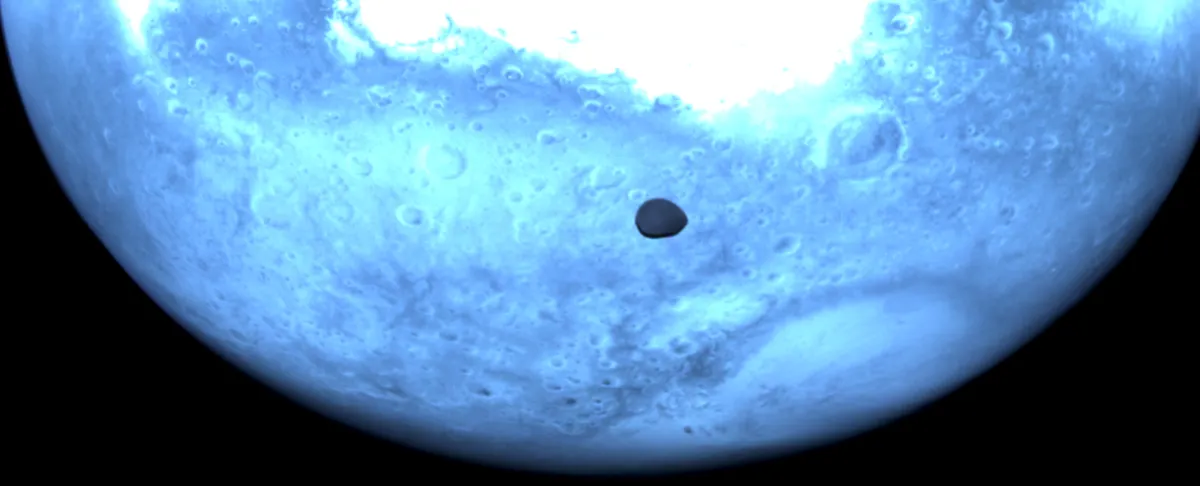
In a groundbreaking journey to investigate a historic asteroid collision, a European spacecraft has made a remarkable flyby of Mars, capturing rare images of the red planet's enigmatic small moon, Deimos. This significant event was reported by the European Space Agency (ESA) on Thursday, highlighting the ongoing exploration of our solar system.
The HERA mission, developed by Europe, is designed to assess the impact of a previous NASA spacecraft that deliberately collided with an asteroid in 2022. This collision marked the first-ever test of our planetary defenses against potentially hazardous objects. However, HERA’s journey to the asteroid, located 11 million kilometers (about 7 million miles) from Earth in the asteroid belt between Mars and Jupiter, won’t conclude until late 2026.
During its lengthy voyage, the spacecraft executed a slingshot maneuver around Mars on Wednesday, utilizing the planet's gravity to gain speed and alter its trajectory, thereby conserving fuel. Mission analyst Pablo Munoz shared insights during a press conference, revealing that HERA flew as close as 5,600 kilometers from the Martian surface at an impressive speed of 33,480 kilometers per hour. This maneuver allowed the spacecraft to test its scientific instruments and capture around 600 images, including rare photographs of Deimos.
Deimos, the smaller of Mars' two moons, measures approximately 12.5 kilometers wide and remains less known compared to its larger counterpart, Phobos. The origins of both moons are still debated among scientists. Some theorize that they were once asteroids that were captured by Mars' gravitational pull, while others propose that they may have been ejected from a significant impact on the planet's surface. The new images collected by HERA are expected to contribute valuable data to unravel the mysteries surrounding the moons' formation, as explained by Marcel Popescu from the Astronomical Institute of the Romanian Academy.
HERA's HyperScout and thermal infrared imagers are crucial for observing wavelengths beyond human vision, which is why some images of the red planet appear blue. These advanced instruments will play a vital role in analyzing the composition of Deimos, potentially shedding light on its origin and characteristics.
Following its flyby, HERA will redirect its focus back to the asteroid Dimorphos. NASA's DART mission previously impacted Dimorphos in 2022, successfully shortening the 160-meter-wide asteroid's orbit around its larger companion, Didymos, by 33 minutes. While Dimorphos does not pose a threat to Earth, HERA's findings could inform future strategies for planetary defense against potentially hazardous asteroids.
Global space agencies are actively enhancing Earth's planetary defenses by monitoring for potential threats. Earlier this year, a newly discovered asteroid was briefly assessed to have over a three percent chance of impacting Earth in 2032. Fortunately, subsequent observations reduced this risk to nearly zero. Richard Moissl, head of the ESA's planetary defense office, noted that such patterns will become increasingly common as our capabilities for scanning the skies improve.
In addition to the HERA mission, the ESA is developing a second planetary defense initiative aimed at observing the 350-meter-wide asteroid Apophis, which is set to fly just 32,000 kilometers from Earth on April 13, 2029. If approved by the ESA's ministerial council, the Ramses mission will launch in 2028, allowing scientists to gather crucial data as Apophis approaches our planet.
This exciting period in space exploration promises to enhance our understanding of asteroids and their potential threats, paving the way for improved planetary defense strategies in the years to come.